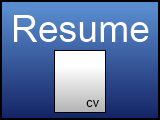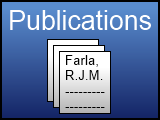Quick Links

 |
 |
 |
 |
 |
Welcome to the Geoverse!

Hello, my name is Robert Farla. I am an experimental geophysicist in charge of the Extreme Conditions - Large Volume Press (EC-LVP) beamline at PETRA III, DESY, Hamburg since mid-2017.
I am interested in the physical and chemical properties of Earth Materials, particularly peridotite and eclogite. These lithospheric and mantle rocks, and the minerals that constitute them, are studied under controlled extreme conditions in the LVP (albeit at smaller length and time scales) to understand the geological processes occuring in the Earth and by extension, in other planetary bodies. Examples include:-
- Mechanical properties for global geodynamic models (rheology/cracking/hydrous weakening/earthquake genesis)
- Microstructural properties for interpretation of field observations (e.g. strain localisation)
- Electrical conductivity properties for interpretation of magneto-telluric data (detection of water and melts...)
- Seismic properties for global seismic models (rock composition affecting wave velocity, attenuation)
The LVP at the beamline is already operational, capable of producing scientific results for ex situ studies in the fields of materials and Earth sciences. Synchrotron X-rays for in situ studies will be available from early 2019, when commissioning starts. The beamline features mainly X-ray Diffraction (XRD) and imaging (radiography) techniques. Please visit the beamline website at http://tiny.cc/petra3p61.

The LVP is a 1500 ton cubic-type press featuring with 6 independently-controlled rams. Therefore, pressure efficiency and stability is high for isotropic compression, reducing the chances of anvil breakage. Early tests show that sample pressures over 60 GPa with uniquely-shaped WC anvils can be achieved. The press is also capable of anisotropic compression for controlled deformation experiments at moderately high pressures (15 GPa). Simultaneous heating is possible by electrical resistive methods using e.g. graphite or LaCrO3 up to temperatures of 1600 °C and 2400 °C, respectively.
Navigate this website using the links provided in the top bar. The links in the side-bar on the left contain additional information for each section.
For photos, see the  link.
link.
